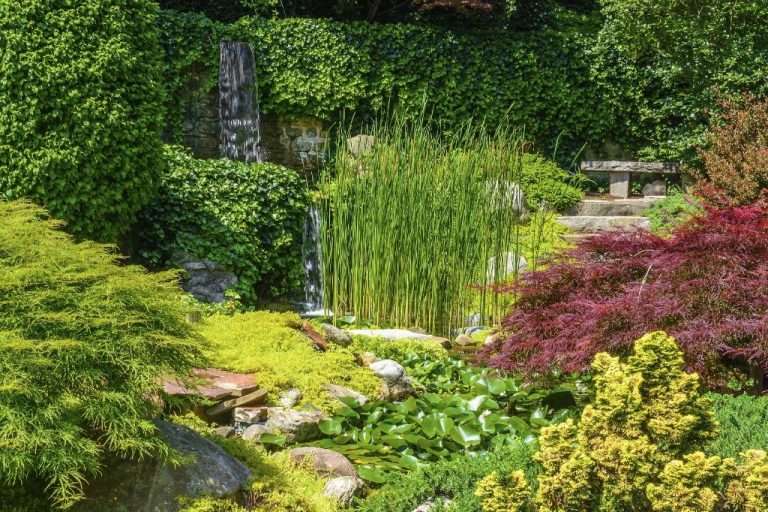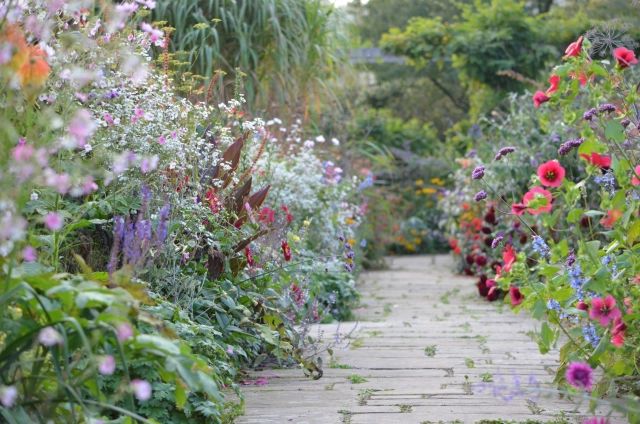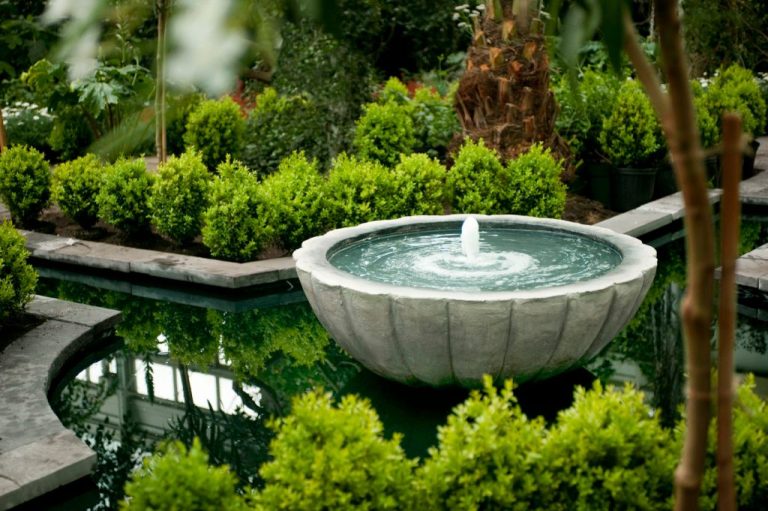Garden Design Styles: Finding Your Aesthetic
Designing a garden takes careful planning and consideration. The style you choose reflects your personal taste and aesthetic preferences. When beginning the design process, it is helpful to survey the range of garden styles and become familiar with key elements of each one. This overview provides a foundation to determine which style best aligns with your vision.
Some of the most popular garden design styles include formal, informal, cottage, Zen, kitchen, rock, and native plant gardens. Formal gardens emphasize structure, symmetry, and geometric patterns. Informal designs have a more natural look with curved beds and organic shapes. Cottage gardens are vibrant and colorful with an old-fashioned charm. Zen gardens create a peaceful oasis with simplicity. Kitchen gardens focus on growing edibles. Rock gardens showcase alpine plants and boulders. Native gardens feature plants adapted to the local region.
By learning about characteristics of different garden styles, you can zero in on a look that fits your personality and space. This garden design guide will walk through key features of popular styles and considerations as you develop plans. With an intentional vision and proper planning, you can create an outdoor oasis reflecting your unique aesthetic.
Formal Gardens
Formal gardens are designed in symmetrical and geometrical shapes. They follow orderly layouts and structured plantings to create an elegant feel. In the 17th and 18th centuries, formal gardens were very popular amongst European royalty and the upper class. Some of the most well-known formal gardens today include the gardens at Versailles, Vaux-le-Vicomte Castle, and Villa d’Este.
Key features of formal gardens are straight lines, rectangular and circular shapes, balance, and neatly trimmed hedges and plants. The layout is structured to showcase order and create dramatic visual impressions as one walks through the garden. Common elements include rectangles of lawn, parterres (formal decorative sections of plants), statues, fountains, stone/tile pathways, and hedges trimmed into geometrical shapes.
“In addition, a historic stone portico overlooks a beautifully tiled Moorish walled garden that reflects major elements in the history of formal garden design.” (https://www.mobot.org/mobot/archives/fulltext_images.asp)
Formal gardens require significant planning, symmetry and upkeep, but provide a sense of order, control and elegance. They are a distinctive way to showcase a gardener’s attention to detail and creativity within structured confines.
Informal Gardens
Informal gardens emphasize a loose, natural style with gentle curves and asymmetrical beds. Plantings are often random and unpredictable, leading the eye through the landscape in a carefree way (source). This type of design works well with cottage gardens, woodland gardens, and other natural styles.
Some key principles for creating an informal garden include:
– Asynmmetrical shapes for beds and borders. Avoid straight lines and perfect geometries.
– Curving, meandering pathways that guide visitors through the space.
– Clustered plantings that look wild and natural versus orderly and tidy.
– Varied textures, forms, heights to maintain visual interest.
– Repeating plants throughout the garden for cohesion.
– Bold pops of color for excitement and contrast.
The informal style creates a relaxed, welcoming atmosphere perfect for more casual, intimate spaces. But it still requires thought and planning for visual harmony. Subtle curves, thoughtful plant selection, and mindful repetition of textures and colors help these gardens feel effortlessly natural (source).
Cottage Gardens
Cottage gardens are characterized by an informal, relaxed design with an overflowing, abundant feel. They often feature old-fashioned flowering plants in mixed beds rather than orderly arrangements. Some of the most popular plants in cottage gardens include foxgloves, hollyhocks, delphiniums, lavender, and roses. Foxgloves, with their tall spikes of tubular flowers in shades of purple, pink, and white, are a quintessential cottage garden plant that does well in partial shade (Matlock Garden Centre). Delphiniums like the Guardian Blue variety also thrive in cottage gardens, valued for their early summer blooms on towering flower stalks (Delphinium Guardian Blue).
Cottage gardens have an informal, casual feel rather than a meticulously planned layout. Plants are often allowed to freely self-seed and spread. The beds overflow with diverse flowers, herbs, and vegetables rather than orderly rows and groupings. meandering gravel or brick paths wander through the beds. Decorative touches like trellises, gazing balls, bird baths, and wooden benches add to the charm.
The cottage garden style emerged in England and gained popularity in the United States in the late 1800s. They are well-suited to smaller urban or suburban gardens, allowing you to cultivate beauty even without acres of space. Cottage gardens offer an intimate, welcoming feel and attract pollinators with their diverse flowering plants.
Zen Gardens
Zen gardens originated in Japan and are designed to aid meditation and mindfulness. They exemplify the Zen Buddhist principles of simplicity, tranquility, and focus. The key features of a Zen garden include clean lines, minimalism, emptiness, and natural elements like rocks, gravel, moss, and flowing water (The meaning behind the Japanese Zen garden).
Zen gardens are often enclosed and include very minimal plantings. The main focus is on mindfully raking patterns in the gravel or sand, which represents the act of clearing and focusing the mind. Large rocks are carefully placed and represent islands or mountains. The empty space around the rocks encourages contemplation. Bridges over “water” (represented by gravel) symbolize the journey between realms (Elements of a Zen Garden & Their Meaning). Everything is intentionally simple and natural to evoke tranquility.
The goal of a Zen garden is to provide a quiet space for self-reflection and meditation. As you rake the gravel into aesthetic patterns, you clear your mind. The minimalism and clean lines represent freedom from clutter and distraction. These gardens exemplify the Zen principles of finding enlightenment through emptying the mind and embracing natural simplicity.
Kitchen Gardens
Kitchen gardens, also known as potagers, are designed for growing edible plants like vegetables, herbs, and fruits. They feature organized rows and beds to allow easy access for tending and harvesting. According to Homes & Gardens, kitchen gardens traditionally have a neat, structured layout with raised beds and gravel or brick paths between them.
When designing a kitchen garden, it’s best to subdivide the space into separate beds for different crops. This makes it easier to practice crop rotation to prevent soil diseases. Edging the beds also helps define the growing areas. For example, you could edge with bricks, rocks, or wood. Popular kitchen garden crops include tomatoes, peppers, lettuce, beans, carrots, radishes, and of course, herbs like basil, parsley, thyme, and more.
The orderly nature of kitchen gardens makes them both beautiful and highly functional. The structured beds not only look organized, but also make planting, maintaining, and harvesting more efficient. Kitchen gardens allow you to grow a variety of edible plants in a compact, accessible space.
Rock Gardens
Rock gardens are designed to mimic the look and feel of a natural alpine habitat using rocks, gravel, and low-growing alpine plants that thrive in hot, dry conditions. The goal is to create the illusion of a mountain scene by incorporating interesting rock formations and showcasing colorful, drought-resistant plants.
When designing a rock garden, look for unique rock shapes, textures, and sizes to build up mounds and slopes. Granite, limestone, and sandstone all work well. Arrange the rocks aesthetically, interplanting small alpine plants like sedum, saxifrage, thrift, and creeping phlox in the crevices. Top dress with gravel mulch to allow for drainage.
Some excellent alpine plants for rock gardens include: creeping thyme, ajuga, hardy geraniums, lewisia, dianthus, dwarf conifers, hens and chicks, dwarf irises, and low-growing succulents like sedum and sempervivum. Focus on specimen plants with unique textures, forms, or flowers to highlight against the rocks. The harsh growing conditions will also accentuate the gnarled shapes and forms of the plants.
Rock gardens allow gardeners to create a microcosm of the alpine splendor found in nature. The rocky outcrops juxtaposed with delicate rock garden plants make for an intriguing landscape.
Sources:
https://www.pinterest.co.uk/pin/106327241188663126/
https://www.pinterest.co.uk/daviddomoney/alpine-rock-gardens/
Native Plant Gardens
Native plant gardens showcase plants that are indigenous to a specific geographic area. Focusing on native species provides numerous benefits for local ecosystems and wildlife (The Ultimate Guide to Native Plant Gardening). Since native plants are already adapted to local environmental conditions like rainfall, soil types, and temperatures, they typically require less maintenance in terms of water, fertilizer, and overall care (The Benefits of Native Plant Gardening).
Native plants also provide vital food and shelter for native wildlife species like birds, butterflies, and pollinators. Studies show that native plants support 10 times more species diversity compared to non-native ornamental plants (Life Lessons and Native Plant Gardening). By choosing native plants, you can create an oasis for local wildlife right in your own backyard.
When designing a native plant garden, research which species are indigenous to your specific area. Native plant societies, university extension services, and local nurseries can provide recommendations tailored to your region. Focus on low-maintenance native perennials, shrubs, and trees that provide pollen, nectar, seeds, nesting sites, and other ecological benefits. With the right native plant selection, you can create a gorgeous garden that supports biodiversity and the health of your local ecosystem.
Finding Your Style
Choosing a garden design style that reflects your personality and lifestyle is key to creating an outdoor space you’ll love. Start by assessing your needs and preferences to determine the aesthetic that best fits you.
Consider how you plan to use your garden. Do you cook and entertain often? A kitchen garden with abundant herbs and vegetables could be ideal. Are you seeking a tranquil retreat? A Japanese zen garden may be your match. If you have kids or pets, a low-maintenance cottage garden is likely more practical than a pristine formal garden.
Also think about the look and feel you want to create. Curved beds, rambling vines, and overflowing blooms characterize a romantic English garden. Modern landscapes often feature sleek lines, geometric shapes, and architectural plants. Desert gardens showcase cacti, succulents, and native vegetation. Your location, climate, and exposure will factor into which plants will thrive.
It’s helpful to gather inspiration from books, magazines, and public gardens to identify styles you’re drawn to. But the most important consideration is your own personality and lifestyle. The right design will reflect your unique vision and create an inviting space for you to enjoy each day.
Bringing Your Vision to Life
Executing your dream garden design requires careful planning and often professional help. Here are some tips to bring your vision to life:
Draw up a detailed plan for the layout and materials needed. Sketch ideas or use garden planning software to visualize the final design. This will serve as a guide for you or a landscape professional. Refer to 10 Easy Steps to Create Gardens in Your Yard for planning basics.
Determine which parts of the project you can tackle yourself and where you need professional help. While avid gardeners may be able to handle planting, weeding, and simple landscaping, complex hardscaping, irrigation, lighting, or drainage systems often require an experienced landscape contractor.
Get quotes from several reputable landscape professionals if hiring help. Ask to see examples of their previous work and check reviews. Clearly communicate your vision and expectations. Hiring the right pro for the job will ensure proper execution.
Schedule projects in phases if needed. Focus on one section of the garden at a time, allowing new plantings to establish before moving ahead. Phased completion can work within budget constraints.
Be flexible and make adjustments. An overall cohesive design is important, but some details may shift once construction is underway. Working collaboratively with landscape pros allows for tweaks that enhance the final garden.
With thoughtful preparation, high-quality materials, proper timing, and help from the right professionals, you can bring your ideal garden design to life.





